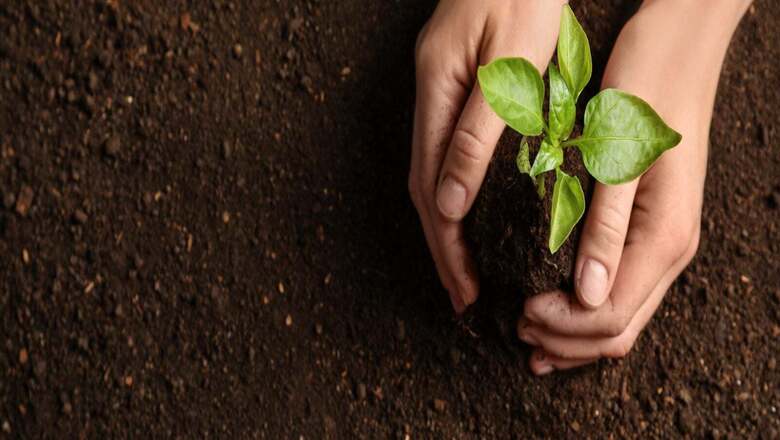
views
Soil, in most Indian languages including Hindi, is called mati — i.e., maa-ti, the mother. She is the mother. She is Vasundhara, Earth’s spacious womb. The crop is born in the womb of the soil, so she is fertile. The indescribable and continuous motion of creation and development in the hidden of Mother Earth is eternal. The mother-goddess from Mohenjo Daro and Harappa is the prototype of the Indian mother-goddess; it was Prithvi Murti — there is a tree emerging from the crotch of an idol.
Mati or Earth was worshipped by the primitive folk and tribal society as a symbol of vitality and fertility. The nationalistic people of India imagine the form of Bharat Mata as a form of soil worship. Swami Vivekananda spoke about Mother India. This ‘missing link’ of Prithvi Puja is still going on in all nations and ethnic groups. Soil lore is a way of life from time immemorial, rooted in the soil and the hearts of people. Wonders of Earth’s biodiversity lie in soil diversity as well. Soil affects farming and cultivation. It is the habitat and shelter of numerous plants, animals and microorganisms. All food in the living world has its origin in the soil. The eternal hunger of the world is met from the Earth. The food that accumulates in the granary is the desire of the agricultural people from the womb of the soil, as if ‘wanting to be’ is from the depths of the mind. ‘Maati-Ma’ has taken the responsibility of quenching the hunger of the ravenous mind with the fiery stomach in reality. So, the goddess Annapurna is like a goddess of soil. She is Durga because she destroys the evil of hunger. And with the rights of this land, comes the world’s recent million-dollar struggle — numerous wars, much fraudulence, abuse and deception; lots of labour, efficient efforts, and selected strategies are used to make the soil productive. The merciless grip of the labourer is difficult, so Mother Earth has to pay attention. She attends to it with branches full of flowers and fruits. This is how the crop fields are filled.
We have an adjective, ‘Down to Earth’. Who are the ‘Down to Earth’ people? How is their lifestyle, and how is their mental practice? Nature has a close relationship with these people. They depend on nature to live and survive. They are the agriculturists, ploughing the soil and sowing crops. Their housing material is soil. They are seen using clay for their pottery. Their daily utensils are made of clay and their cooking is also done on a kiln made of clay. The folk culture of these people is based on soil. So, the soil is the foundation of their life. If the soil is contaminated, if pesticide residue is found in the soil, or if there is erosion, their livelihood is disrupted. Therefore, we should protect the soil not only for farming but also for farmers. Soil Day should be a pledge to comfort the ‘Down to Earth’ ones within their own culture, to preserve soil-based folk culture. This is the basic idea of soil culture.
The Earth nurtures us and so, she is motherly. World Soil Day on 5 December is a global event to celebrate it. If we protect her, we can live, and if the soil is polluted, our death is inevitable. The World Soil Day is a worldwide pledge to protect the soil. On this day, we pledge to protect Mother Earth; the call of the heart should come not only from rural nature; but also from urban cities too. Individuals, families, and states should have proper initiatives to keep the soil arable. We have to use soil resources rationally, not exploit or spoil them. People’s greed should not torment the mother.
May the Earth never take revenge. Clean soil, clean agriculture, and clean groundwater is our hope. Organic agriculture can achieve this goal. Soil and water conservation measures are a need in today’s time. We have to develop eco-friendly rural industries and maintain the cycle of resources. Then only will Nav-anna (new harvest) come back, year after year. A prerequisite for the smell of new rice is the smell of soil. Thus, Soil Day is to keep this intact.
The views expressed in this article are those of the author and do not represent the stand of this publication.
Read all the Latest Opinions here


















Comments
0 comment